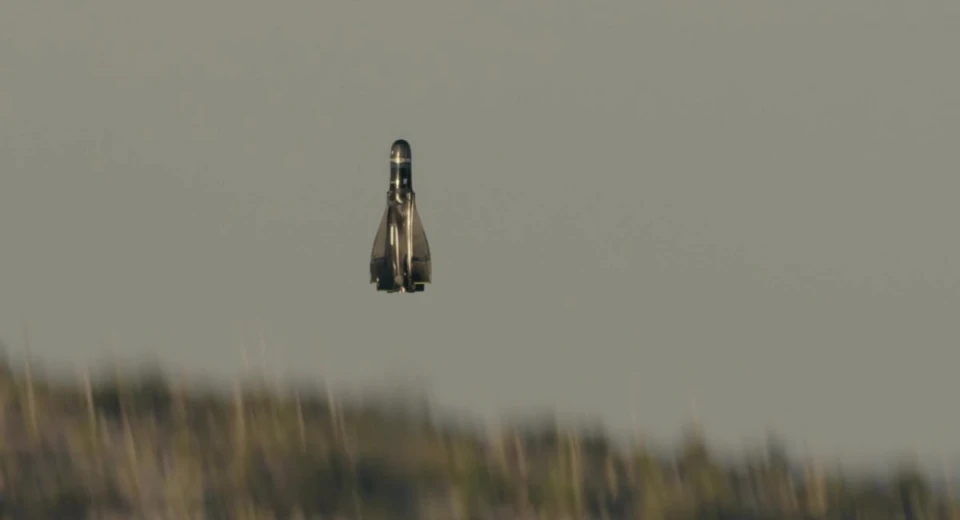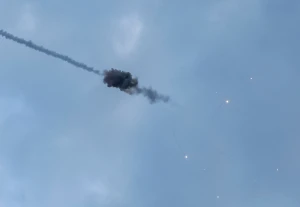
Why U.S. ignores presence of DPRK military in Ukraine. Serhiy Zgurets' column
The U.S. administration will likely attempt to downplay the involvement of North Korean military forces in Russia and the war in Ukraine until the last moment. Acknowledging this situation would require recognizing the failure of its own de-escalation policy and necessitating a reaction
Pentagon Chief's visit to Kyiv
On October 21, U.S. Secretary of Defense Lloyd Austin paid an unannounced visit to Kyiv. This is his fourth visit to Ukraine, which demonstrates international support for Ukraine in the military sphere. Austin met with President of Ukraine Volodymyr Zelenskyy and Minister of Defense of Ukraine Umerov. Commander-in-Chief Oleksandr Syrskyi and the Chief of the General Staff also attended the meeting. They discussed Ukraine's weapons needs and how the United States can and should continue to support the Ukrainian armed forces over the next year.
Against the backdrop of this visit, Lloyd Austin announced another package of military assistance for Ukraine. It is worth $400 million. The previous package, announced on 16 October, was slightly larger - $425 million. But in essence, these packages are similar, as they include ammunition for HIMARS missile systems, the entire line of ammunition for 105 mm and 155 mm artillery systems, as well as 82 mm, 60 mm and 127 mm mines and mortars, anti-tank missiles and M113 armored personnel carriers - all of which are essential on the battlefield.
There was no final press conference. Two issues were discussed behind the scenes. The first was the U.S. reaction to Zelenskyy's Victory Plan, which includes permission to use U.S. long-range systems to strike deep into Russian territory. There were reports that Zelenskyy discussed expanding the use of long-range weapons during his meeting with Austin, but there are no results. And the second is the U.S. reaction to the fact that North Korea has sent troops to Russia to participate in the war against Ukraine. There are photos and videos of North Korean soldiers in Russia, but the head of the Pentagon and all American spokespeople say in unison that they cannot confirm reports of North Korean troops being sent to Russia.
Why is this so? Because the actual involvement of a third country's military in the war is an outright escalation and expansion of the war. Therefore, the U.S. administration will try to ignore the North Korean military in Russia and in the war in Ukraine to the last, as it will need to recognize the failure of its own de-escalation policy and show a real reaction. In these circumstances, blocking the transfer of long-range weapons looks illogical, unreasonable and weak.
For the Biden administration, any move that could potentially lead to an escalation is seen as a threat to the election campaign of Democratic candidate Kamala Harris. It is likely to be difficult to convince Americans of the need for solutions that are desperately needed on the battlefield. But perhaps there will be processes going on behind the scenes that will be felt on the battlefield, although no one will speak about them publicly.
Countering Russian drones
Yesterday, Russia has once again used Shahed drones to strike at Ukraine. Many media outlets are discussing new projects of Ukrainian developers - the use or, rather, the creation of anti-aircraft drones that can hunt down Shaheds. The British outlet the Telegraph published an article referring to a Ukrainian company, Wild Hornets, which is known for developing a drone that hunts Russian reconnaissance UAVs.
The drone, called Zhalo, is based on a quadcopter, has a warhead and a camera located in the central part. This drone can rise to an altitude of up to 3 km and hunt for Russian Shahed drones. The Telegraph article mentions the drone's speed of 160 km/h.

However, this is a somewhat erroneous statement, as the Wild Hornets presented samples that have a speed of 300 km/h. This is exactly what is needed for interception, as the speed of the Shahed is approximately 180 km/h. It is clear that it will be difficult to catch up with a Shahed at 180 km/h or 160 km/h. The guys from Wild Hornets know what they are doing and what capabilities their new drone, called Zhalo, will have.
Timely funding for such projects is crucial, as the threat from drones is real. Using missiles from air defense systems to shoot them down is too expensive and inefficient, and these new samples cost much less than the cost of Shaheds, which ranges from 200,000 per unit.
In parallel with the fact that the Ukrainian side is creating anti-drone systems using anti-aircraft drones, it has become known that the American side has also developed its own samples, which are now being purchased by the Pentagon. This is an interceptor drone from Anduril, a company known for its artificial intelligence and cooperation with the Pentagon. By the way, some of the company's AI solutions are used and supplied to the Ukrainian Armed Forces.
Recently, it became known that Anduril has been awarded a $250 million contract to supply these jet-powered interceptor drones, called Roadrunner-M. This drone is interesting because it has jet engines, launches from a container, and can patrol a certain area in the air. When the operator sees a target, thanks to auto-capture using artificial intelligence, this drone hits the enemy's jet drone or even a cruise missile. And there's a twist: if this drone doesn't find the target, it returns to earth like Elon Musk's spaceships, landing on the surface. It can be refueled again and continue to use its combat power.
About the situation on the front line
In many areas, the situation remains extremely difficult. Everyone is talking about the Pokrovsk and Kurakhove directions, where the bulk of Russian efforts are now concentrated and a significant number of attacks are taking place. But there are other areas that are no less difficult today.
Major Petro Kuzyk, commander of Ukraine's 3rd Svoboda battalion of the Rubizh offensive brigade, said that his unit has been working in one of the areas of the Siversk sector for two years.
A large number of Russian troops have been destroyed during this time, so the count is now in battalions. However, the situation is not easy, as Russia has not only concentrated its efforts, but is also constantly trying to storm the area. This area is not covered by the media, but it is no less resonant in terms of complexity. The problem is that Russia knows exactly what its advantages are: it has more artillery, and it knows that Ukraine has a deficit in counter-battery and artillery systems. Accordingly, Russians are taking advantage of these advantages.
The commander of the 3rd battalion noted that fighting has been going on for three days in some rear positions. As for Russian troops' tactics, they use armored groups. Approximately twice a week, the first wedge is a tank with a roller. This roller is similar to an asphalt paver that clears the roads. It is followed by armored vehicles with troops, whose task is to quickly reach Ukrainian positions and drop off the troops. Accordingly, Ukrainian soldiers have to engage the occupying Russian troops, keeping them away from their positions. So far, they have managed to hold back Russians, but it is getting harder. Russians want to reach Siversk and cut the road that will provide logistics for their entire group.
The major added that about two weeks ago, there was an impression of exhaustion on Russian forces' part, because they began to surrender willingly, and the stormtroopers were not so motivated. At that stage, Ukrainians managed to instill fear in the enemy, because for some time they were really afraid to attack. Previously, it was either convicts or professional stormtroopers who took part in the assaults, but now it is signalmen and repairmen. And this was explained by a large shortage of people. However, since the beginning of last week, Russians must have had a significant replenishment, because both assault groups and the number of assault groups have increased. Of course, this is not encouraging given the Ukrainian unit's exhaustion and extremely short supply of ammunition. But thanks to volunteers and support, there is still a sufficient amount of defense equipment.
Kuzyk noted that the situation on the front line requires more attention from the headquarters and some drastic decisions. Unfortunately, the situation is not looking good right now. We will destroy the occupier by all available means, but it is a crime to exploit the infantry in a permanent heroic mode. This means that we will wipe out the best of the best. Therefore, we need either support, or replenishment, or stabilization of the line, which is dynamically moving not in our favor. The situation is complicated and sometimes out of control.
- News













































